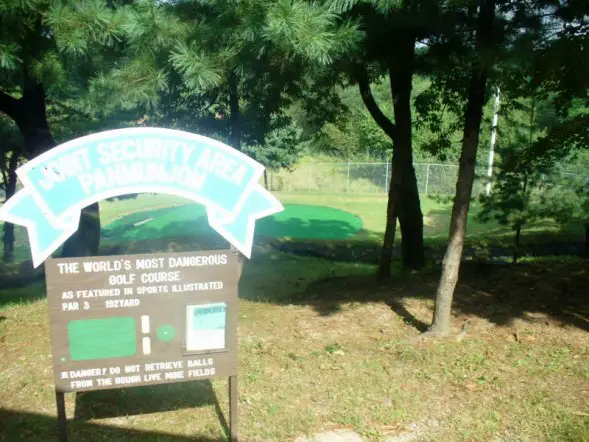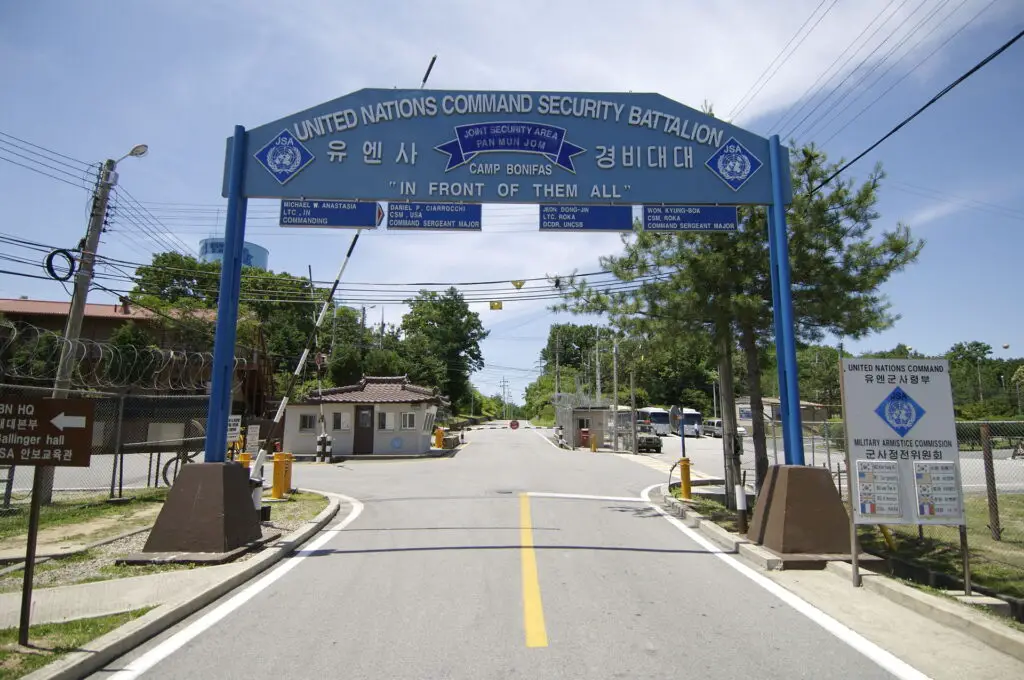Golf is challenging enough without worrying about what surrounds the course outside the boundaries, but one course in Panmunjom, South Korea, makes playing golf a dangerous event.
The course isn’t 18 or even nine holes of golf. It is a 192-yard par-3, one-hole course next to one of the most heavily guarded borders in the world, the Demilitarized Zone (DMZ) between North and South Korea. The single hole is on Camp Bonifas, the home of the United Nations Command Security Battalion. Camp Bonifas is located 1,400 feet (200 meters) from the Korean DMZ, the zone set to enforce the Korean Armistice Agreement of 1953. It is operated by Korean and United States armed forces.
The golf hole was dubbed the “World’s Most Dangerous Golf Course” in a 1988 Sports Illustrated article for a few reasons. While the tee box sits on top of an empty machine gun nest and runs to an artificial turf green where the cup sits, it’s what surrounds the course that truly makes it dangerous.
The border of North Korea is 500 yards (457 meters) away, which has North Korean soldiers just beyond, and the course is surrounded on three sides by landmines. The course is also surrounded by an 18-foot-high security fence with concertina wire at the top. A trench six feet deep runs along another side. If someone on the base wants to play on the course, they are required to be armed at all times.
Even the camp’s name where this course is located demonstrates how dangerous this place is. The camp was named after Captain Arthur Bonifas, an American soldier killed in a horrific event known as the Axe Murder Incident.
The event took place in 1976 when an American and United Nations Command work party, which included Captain Bonifas and First Lieutenant Mark Barrett, trimmed a poplar tree. The trees were being cut because they were obscuring visibility. The North Koreans claimed the tree had been planted by the founder of North Korea, Kim Il Sung.
Twenty North Korean soldiers crossed the demarcation line and used axes that had been used by the work party to kill Bonifas and Barrett and injured all but one of the United Nations Command soldiers working with them.
The response to the Axe Murder Incident by the United States and South Korea was a show of force called Operation Paul Bunyan. Three days after the attack, a large contingent of American and South Korean soldiers cut the entire tree down to the stump. Tensions escalated, but the North Koreans eventually backed down.
Tourists now frequent the base, almost 1,000 a day, to see the DMZ, though they aren’t allowed to play a round on the “World Most Dangerous Golf Course.” Now you know why that’s a good idea.
Sources: Golf.com, Army.mil, Washington Post




